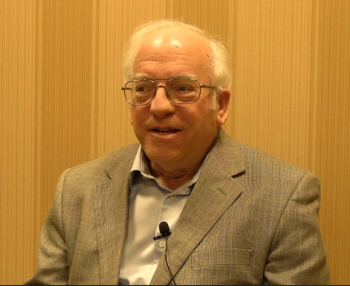
New Method for Detecting Inorganic Chromium in Environmental Water Samples
Detecting inorganic chromium in water requires a more efficient approach than the current methods. In a recent study, researchers proposed a methodology for detecting inorganic chromium (Cr) in environmental water samples using direct immersion dual-drop microextraction (DIDDME) followed by graphite furnace atomic absorption spectrometry detection.
In a recent study, researchers at Wuhan Polytechnic University in China have developed a new methodology for detecting inorganic chromium (Cr) in environmental water samples. The study, published in Talanta, proposes a novel separation and preconcentration method of direct immersion dual-drop microextraction (DIDDME) for the speciation of Cr(III) and Cr(VI) followed by graphite furnace atomic absorption spectrometry detection (1).
Inorganic chromium is a major and ubiquitous pollutant in the environment that can originate from natural and anthropogenic sources. The toxicity and bioavailability of chromium depends on its chemical form. Cr(III) and Cr(VI) are recognized as chromium’s two most stable species. Cr(III) plays an important role in protein, glucose, and lipid metabolism, as well as insulin regulation, but it also has genotoxicity at high concentration levels. On the other hand, Cr(VI) may have allergic, teratogenic, mutagenic, and carcinogenic effects on human beings.
The proposed DIDDME method does not require tedious and complicated pre-oxidation, pre-reduction and centrifugation, or filtration operations, which may lead to the risk of sample contamination and analysis errors. Instead, two organic drops hold on the needle tips of microsyringes were concurrently immersed in a stirred sample solution. Each drop contains a chelating reagent, which can react with a specific species under the same pH value. Therefore, Cr(III) and Cr(VI) can be selectively extracted into different drops. After extraction and preconcentration, the drops can be removed and directly analyzed using a variety of analytical techniques, such as graphite furnace atomic absorption spectrometry (AAS). The preconcentration step provides a significant increase in sensitivity, allowing for the detection and quantification of trace amounts of the species of interest.
An enrichment factor of 400-fold was obtained for Cr(III) and Cr(VI). Under the optimized conditions, detection limits for this method were 1.1 ng/L and 1.4 ng/L for Cr(III) and Cr(VI) with relative standard deviations of 5.1 and 6.3%, respectively. The method was applied for the separation, preconcentration and determination of Cr(III) and Cr(VI) in environmental water samples and certified reference materials with satisfactory results. Recoveries of spiked experiments ranged from 86.0 to 112%.
In summary, the importance of identifying and quantifying chromium species in environmental water samples lies in evaluating their potential risks and impact on the environment, ecology, and human health. The World Health Organization (WHO) has set a maximum permissible amount of chromium in potable water at 50 μg/L.
With this new methodology, researchers have developed a more efficient and accurate way to detect and measure inorganic chromium in environmental water samples.
Reference
(1) Yan, J.; Zhang, C.; Wang, C.; Lu, D.; Chen, S.A novel separation and preconcentration methodology based on direct immersion dual-drop microextraction for speciation of inorganic chromium in environmental water samples. Talanta 2023, 255, 123902. DOI:
Newsletter
Get essential updates on the latest spectroscopy technologies, regulatory standards, and best practices—subscribe today to Spectroscopy.




